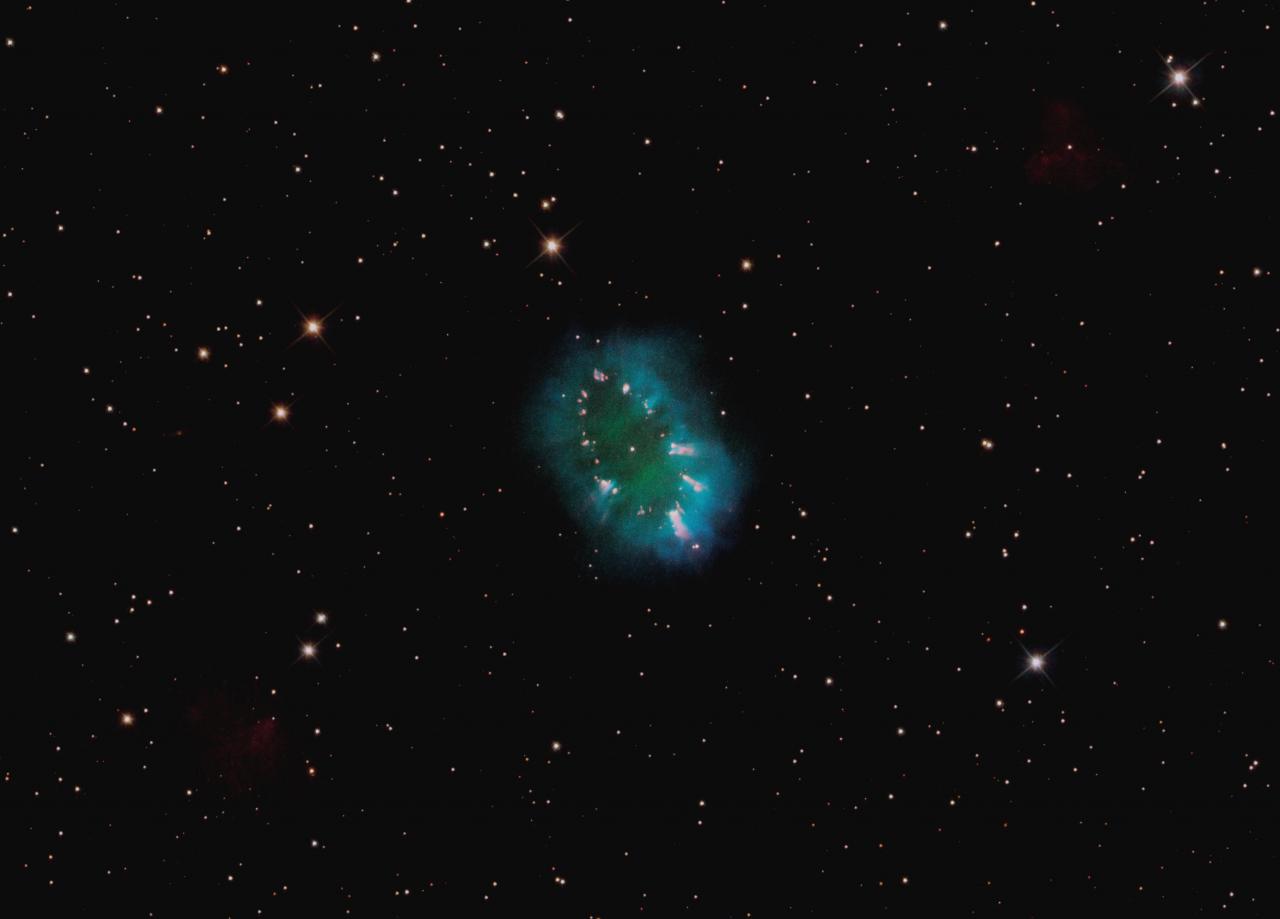Subvenciones relacionadas:
General
Nuestro proyecto persigue tres objetivos principales: 1) Determinar las condiciones físico-químicas de las nebulosas planetarias con geometría bipolar y de las nebulosas alrededor de estrellas simbióticas. El fin es entender el origen de la bipolaridad y poner a prueba los modelos teóricos que intentan explicar la morfología y la cinemática nebular, con especial énfasis en los modelos con estrellas binarias centrales. 2) Estudiar las microestructuras de baja excitación en las nebulosas planetarias, su origen (en relación con el proceso de formación de la propia nebulosa), sus propiedades físico-químicas y su interacción con el gas nebular. 3) Descubrir y estudiar nuevas nebulosas planetarias galácticas y extragalácticas. La meta es analizar sus propiedades físico-químicas e investigar los gradientes de composición química a lo largo de los discos galácticos.
Miembros
Actividad científica
Publicaciones relacionadas
-
The UV-Excess survey of the northern Galactic planeThe UV-Excess survey of the northern Galactic plane images a 10° × 185° wide band, centred on the Galactic equator using the 2.5-m Isaac Newton Telescope in four bands (I5875) down to ~21-22 mag ( in I5875). The setup and data reduction procedures are described. Simulations of the colours of main-sequence stars, giant, supergiants, DA and DB whiteGroot, Paul J. et al.
Fecha de publicación:
102009 -
The Necklace: equatorial and polar outflows from the binary central star of the new planetary nebula IPHASX J194359.5+170901IPHASX J194359.5+170901 is a new high-excitation planetary nebula with remarkable characteristics. It consists of a knotty ring expanding at a speed of 28 km s-1, and a fast collimated outflow in the form of faint lobes and caps along the direction perpendicular to the ring. The expansion speed of the polar caps is ˜100 km s-1, and theirCorradi, R. L. M. et al.
Fecha de publicación:
12011 -
The kinematics of the quadrupolar nebula M 1-75 and the identification of its central starContext. The link between how bipolar planetary nebulae are shaped and their central stars is still poorly understood. Aims: This paper investigates the kinematics and shaping of the multipolar nebula M 1-75, and briefly discusses the location and nature of its central star. Methods: Fabry-Perot data from GHαFAS on the WHT that samples the DopplerSantander-García, M. et al.
Fecha de publicación:
92010 -
GHαFaS: Galaxy Hα Fabry-Perot System for the William Herschel TelescopeGHαFaS, a new Fabry-Perot system, is now available at the William Herschel Telescope (WHT). It was mounted, for the first time, at the Nasmyth focus of the 4.2-m WHT on La Palma in 2007 July. Using modern technology, with a spectral resolution of the order R˜15,000, and with a seeing-limited spatial resolution, GHαFaS will provide a new look at theHernandez, O. et al.
Fecha de publicación:
62008

![Teacup en [O III] y CO(2-1) Los agujeros negros supermasivos modifican la distribución de gas molecular en la región central de las galaxias. Crédito: HST y C. Ramos Almeida.](/sites/default/files/styles/crop_square_2_2_to_320px/public/images/project/teacup_english.001.jpeg?itok=dF4bDw-q)

